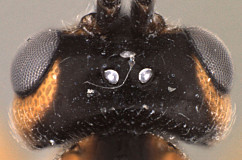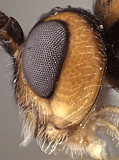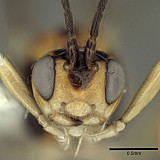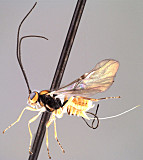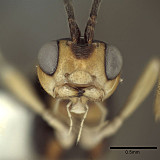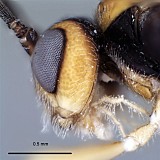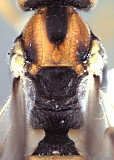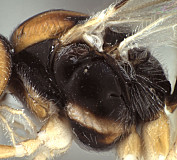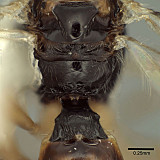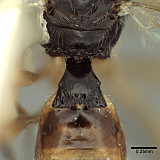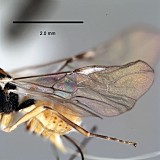Opius danielsae Wharton, 2013
Holotype: Female, deposited in UNAM.
Two distinctly different opiines were reared from this sample of D. imperialis flower heads, with Doryctobracon anneae reared only from Gymnocarena mexicana and O. danielsae reared only from P. trinotata . The puparia of the two tephritids are distinctly different in color and texture, allowing reliable segregation prior to emergence of flies and wasps. One sample of the same plant species from the same general locality but two years earlier yielded three specimens of a third species of Opiinae (Opius yoderi ), but without specific host associations.
Examination of empty puparia from which wasps emerged revealed the presence of a weak cocoon within the puparium. Opiine Braconidae generally do not make cocoons, but this aspect of their biology has not been well-studied and merits further investigation since opiine parasitoids of fruit-infesting Tephritidae are not known to spin cocoons.
There are no specimens currently determined for this OTU, or those specimens determined for this OTU are not yet mappable.
MEXICO: Morelos
Lago de Zempoala
23–25.ix.1991
A. L. Norrbom
Second label:
reared ex capitulum
of Dahlia imperialis
Roezl (91M16)
Third label:
reared ex puparium
Laksyetsa trinotata
(Tephritidae) emer.
viii.1992
This material is based upon work supported by the National Science Foundation under Grant Numbers DEB 0949027 and DEB 0328922 with REU supplement 1313933.
Any opinions, findings, and conclusions or recommendations expressed in this material are those of the author(s) and do not necessarily reflect the views of the National Science Foundation.

